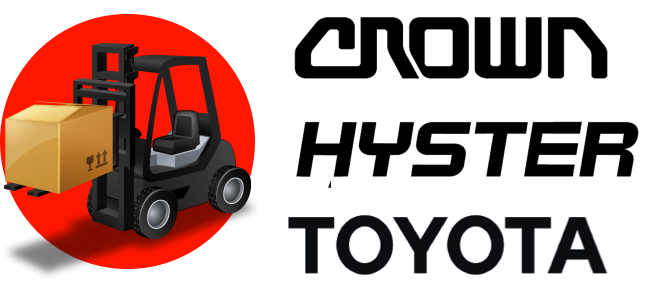The Definitive Guide to Leasing a Forklift for Your Company
Leasing a forklift can be a strategic move for many companies, offering flexibility, financial benefits, and access to the latest equipment. If your company is considering a forklift lease, this guide will provide you with a comprehensive overview of the process and important factors to consider.
Step 1: Assessing Your Company’s Needs
Before exploring leasing options, have a clear understanding of your material handling requirements.
- Determine Usage: Evaluate the frequency and intensity of forklift use in your operations. This will influence the type of forklift you need and the terms of the lease.
- Identify Specifications: Know the load capacity, lift height, and any special attachments you may require. Consider the conditions in which the forklift will operate, such as narrow aisles or rough terrain.
- Estimate Duration: Decide how long you will need the forklift. Lease terms can be flexible, ranging from short-term to several years.
Step 2: Understanding Leasing Options
Get familiar with leasing agreements to find one that aligns with your business model and financial goals.
- Operating Lease: Typically lower monthly payments with the option to return the equipment at the end of the lease, perfect for short-term needs or avoiding obsolescence.
- Capital Lease: More like a loan, where you have the option to purchase the forklift at the end of the lease term, suitable for long-term needs.
- Lease-to-Own: For companies that plan to keep the forklift, this option allows you to buy the equipment at the end of the lease, usually for a nominal amount.
Step 3: Comparing Costs
Evaluate the financial implications of leasing a forklift versus purchasing one outright.
- Lease Payments: Consider how the lease payments will fit into your company’s budget and cash flow.
- Maintenance and Repairs: Understand what maintenance and repair services are covered under the lease.
- Tax Benefits: Consult with your financial advisor to understand potential tax deductions from leasing.
Step 4: Selecting the Right Forklift
Choose a forklift model that best suits your operational needs and budget constraints.
- Latest Models: Leasing can give you access to the most current models with advanced technology.
- Fuel Efficiency: Consider the operating cost savings of leasing a newer, more fuel-efficient model.
- Dealer Inventory: Work with a dealer that has a diverse inventory and can provide the forklift that matches your specifications.
Step 5: Choosing a Reputable Forklift Dealer
The forklift dealer you choose should be as reliable as the equipment they lease.
- Dealer Reputation: Look for a dealer with strong customer service and a track record of integrity.
- After-Sales Support: Ensure they offer comprehensive after-sales support, including maintenance and service.
- Flexible Terms: Seek out a dealer who can offer flexible leasing terms that can be tailored to your company’s changing needs.
Step 6: Negotiating the Lease Agreement
Understand and negotiate the terms of the lease agreement to benefit your company’s specific needs.
- Lease Term: Negotiate the length of the lease based on how long you’ll need the forklift.
- Payment Schedule: Work out a payment schedule that aligns with your company’s financial planning.
- End-of-Lease Options: Clarify the options available at the end of the lease term, including renewal, purchase, or upgrade.
Step 7: Finalizing the Deal
Before signing the lease, ensure all terms are clear and understood.
- Review the Contract: Go through the lease agreement thoroughly and ensure all parties are clear on each term.
- Insurance: Verify that the appropriate insurance coverage is in place for the leased forklift.
- Delivery and Training: Arrange for the delivery of the forklift and any necessary operator training.
Conclusion
Leasing a forklift can offer many advantages, from preserving capital to providing flexibility in equipment management. By carefully assessing your needs, understanding leasing options, and choosing the right partner, you can ensure that leasing a forklift is a decision that drives your company forward. Always consult with financial advisors to understand the full implications of the lease on your company’s finances. With the right approach, leasing can be an effective solution to meet your material handling needs without the long-term commitment of purchasing.
HYSTER H50FT – HYSTER S155FT – HYSTER E60XN – HYSTER E50XN – HYSTER E70XN – HYSTER H50FT – HYSTER H70FT – TOYOTA 7FGCU45 – TOYOTA 8FDU30 – TOYOTA 8FG40U – TOYOTA 8FGU25 – TOYOTA 8FGU30 – TOYOTA 6FGCU15 – TOYOTA 7FGU35 – LINDE H25CT – LINDE H30D – LINDE H70D – LINDE H45T – LINDE H30T – LINDE H50D – CLARK GCX25 – CLARK C30D – CLARK C25CL – CLARK GPX25 – CLARK CHY120 – CLARK CMP25G – CROWN 30SCTT – CROWN C5 1000-40 – CROWN FC4000 – CROWN FC4010-50 – CROWN FC4020-40 – CROWN FC4525-55
